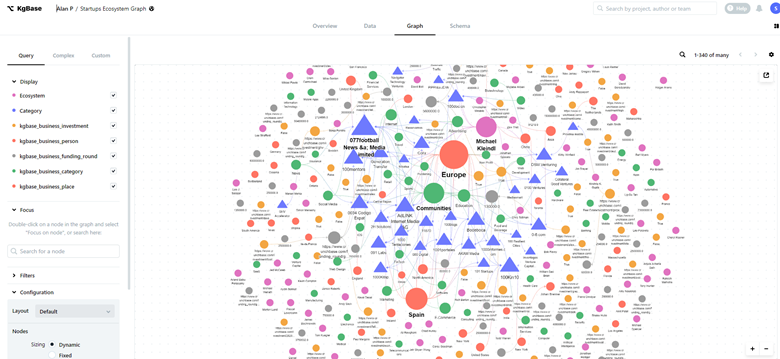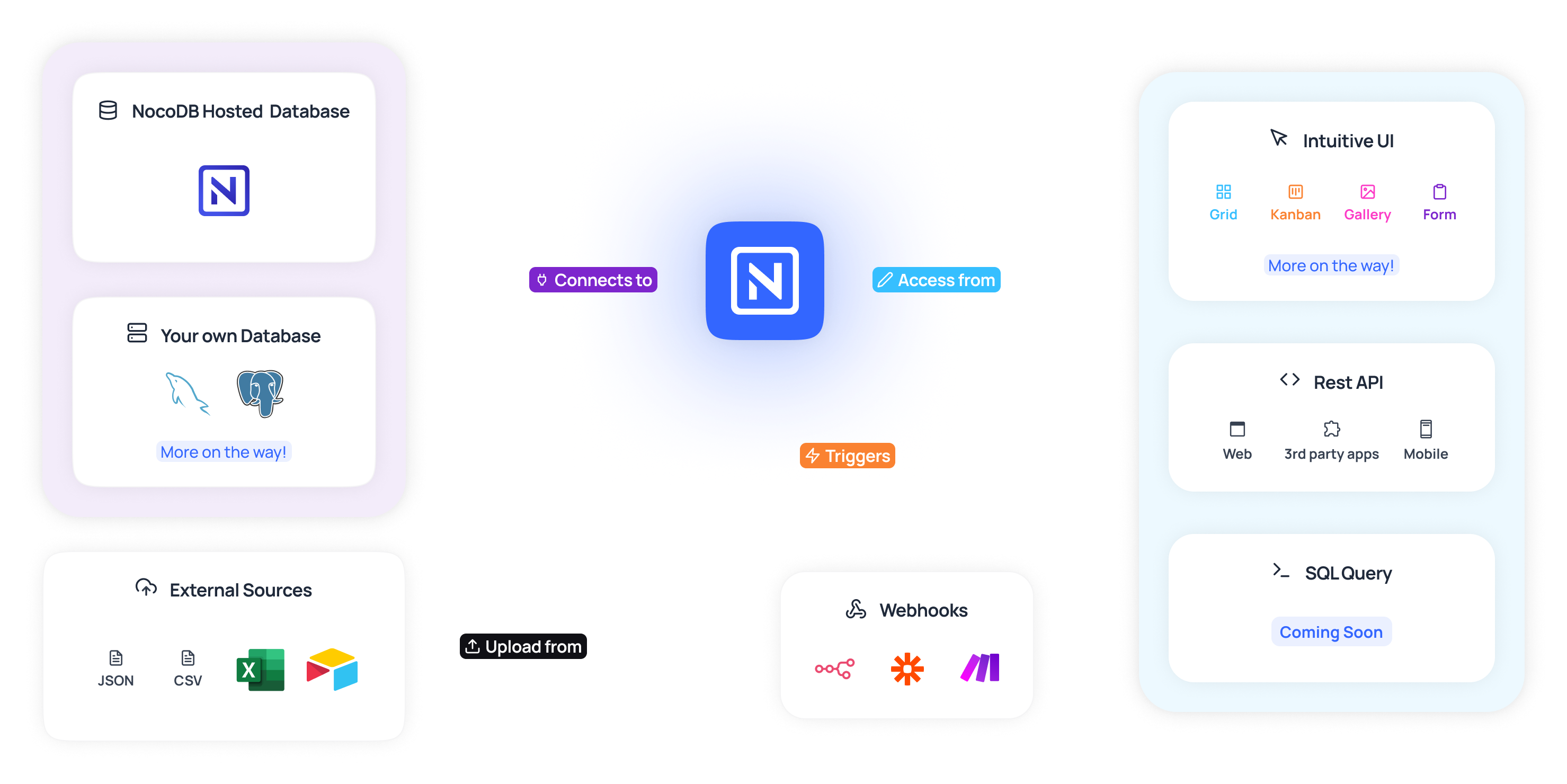No-Code Solutions for Open System Data Source Creation: Build Without Coding Abilities
No-Code Solutions for Open System Data Source Creation: Build Without Coding Abilities
Blog Article
Discover How Scalable Data Sources Can Be Utilized Without Coding to Improve Your Business Workflow
In today's fast-paced service environment, the capability to take care of and evaluate information efficiently is extremely important. Scalable databases, particularly when coupled with no-code services, supply a transformative method that empowers non-technical customers to streamline operations. By using devices that call for no coding competence, organizations can boost their operational capabilities while minimizing dependancy on IT sources. Nevertheless, the genuine question exists in recognizing just how these services can be tailored to details organization requirements and what potential hurdles may develop in their application. Discovering these aspects can light up the path to operational excellence.
Comprehending Scalable Data Sources
Scalable databases are vital for modern-day service procedures, enabling companies to successfully manage increasing volumes of data without compromising performance. These databases are designed to expand and adjust to the altering demands of a service, guaranteeing that they can deal with larger datasets and even more complex questions as business requirements evolve.
Comprehending scalable data sources entails recognizing their two main kinds: vertical scaling and horizontal scaling. Vertical scaling, or "scaling up," entails including even more power (CPU, RAM) to an existing web server to improve performance. Conversely, horizontal scaling, or "scaling out," requires including a lot more web servers to distribute the tons, which usually causes better flexibility and fault tolerance.
Another important aspect is the style of scalable databases, which can be either relational or non-relational. Relational databases, such as MySQL and PostgreSQL, are structured and use SQL for queries, while non-relational data sources, like MongoDB and Cassandra, use even more adaptability with unstructured data.
Ultimately, understanding scalable data sources is essential for organizations aiming to utilize data as a tactical possession, allowing them to stay competitive in a progressively data-driven environment.

Benefits of No-Code Solutions
Unlocking the possibility of no-code options equips services to streamline operations and improve productivity without the demand for substantial programming expertise. These systems enable non-technical individuals to develop, customize, and take care of data sources effortlessly, thus democratizing accessibility to technology throughout teams.
Among the primary advantages of no-code services is their speed of application. Services can swiftly release applications and automate processes, significantly reducing the moment invested in advancement cycles. This agility makes it possible for organizations to react immediately to market modifications and client needs, cultivating an one-upmanship.
Furthermore, no-code platforms lower dependence on IT divisions for everyday jobs, allowing technological groups to concentrate on even more complex tasks that require specialized abilities. This change not just optimizes source allotment however also advertises innovation within the organization.
Cost-effectiveness is one more advantage, as no-code options can decrease growth and maintenance costs. By reducing the need for coding expertise, companies can harness the abilities of their existing labor force without the overhead of working with extra employees.
Popular No-Code Database Tools
The increase of no-code solutions has resulted in the appearance of numerous database devices that cater to organizations looking for effectiveness and accessibility. These tools encourage individuals with limited technical competence to create, handle, and manipulate data sources perfectly.

Caspio stands apart for its capacity to construct web applications with no coding. It you could check here allows services to produce durable databases and deploy applications quickly, dealing with various industry needs. her latest blog Knack uses easy to use user interfaces and effective information administration capacities, allowing organizations to develop personalized applications customized to their process.

Use Situations in Service Workflow
How can companies take advantage of database tools to enhance their operations? Scalable databases give companies with effective capabilities to handle and assess information without the need for extensive coding knowledge. These tools can streamline various organization processes, eventually leading to enhanced efficiency and efficiency.
One popular use case is client partnership management (CRM) Businesses can make use of scalable databases to track customer communications, preferences, and responses, making it possible for tailored communication and better solution. By streamlining this information, groups can work together better and react to consumer requirements in real-time.
Another significant application is supply administration. Companies can use no-code data source tools to monitor supply levels, track deliveries, and projection need. This guarantees optimal inventory levels, decreases waste, and minimizes stockouts.
Additionally, project monitoring can profit from scalable databases by enabling groups to handle tasks, target dates, and sources in a combined system. With real-time updates and data visualization, task supervisors can make informed choices.
Getting Going With Implementation
Applying scalable databases in business operations needs an organized technique to make sure successful assimilation and application. The initial step is to carry out a comprehensive requirements analysis, identifying particular service demands, data types, and expected development patterns. This fundamental understanding will certainly published here guide the selection of the proper data source remedy.
Next, choose an easy to use, no-code data source platform that lines up with your functional objectives. no-code. Many contemporary solutions provide instinctive interfaces, allowing non-technical individuals to handle data successfully. After picking a platform, develop a clear information architecture that details just how data will be organized, accessed, and maintained
Training is vital; guarantee that staff member are geared up with the required abilities to use the database. Think about giving tutorials or workshops to acquaint staff with the system's performances.
Verdict
In final thought, the assimilation of scalable data sources via no-code services offers substantial advantages for service procedures. These systems empower non-technical users to successfully handle and analyze data, assisting in enhanced decision-making and collaboration. By adopting tools such as Airtable and Notion, organizations can lower and streamline procedures reliance on IT resources. Ultimately, leveraging these innovations can cause enhanced efficiency and functional performance, positioning companies for sustained growth in an affordable landscape.
One preferred no-code database device is Airtable, which combines the capability of a spreadsheet with the power of a database.Just how can organizations leverage database devices to enhance their operations? Services can utilize scalable databases to track client communications, preferences, and comments, making it possible for individualized interaction and better service.Applying scalable databases in business operations calls for a structured technique to guarantee effective integration and application.In verdict, the integration of scalable databases with no-code services offers significant advantages for service operations.
Report this page